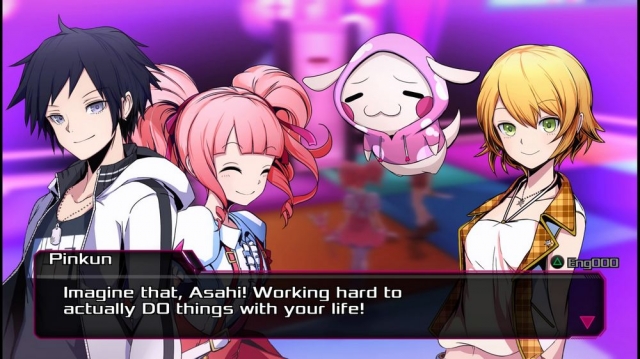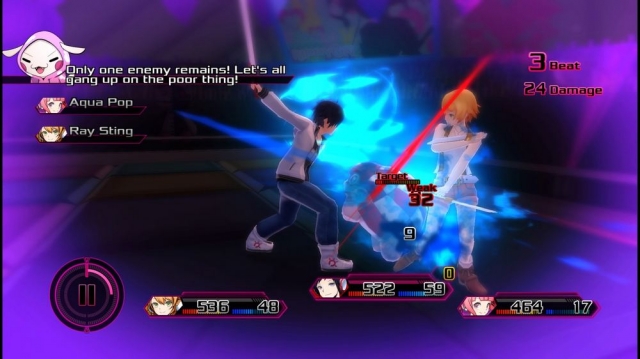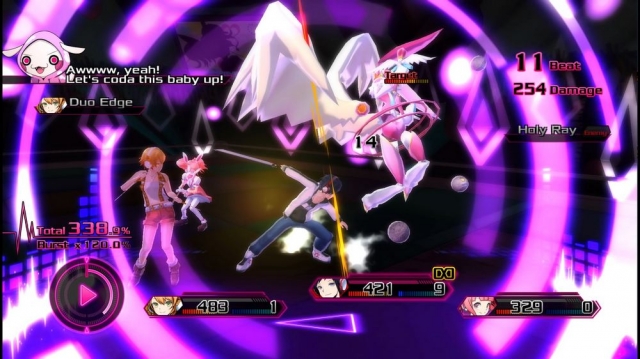
Akiba's Beat Review
When combining aspects of a JRPG and an ARPG, it can be difficult to figure out where one ends and the other begins. Some would see it as a seamless blend of two genres, but others may take it as something that’s hard to define. One such title that falls into the more seamless blend is Akiba’s Beat, a Japanese style ARPG created by developers Acquire and published by Xseed Games (in the North American region.)
Those that read my Danganronpa 1.2 Reload review will know that I’m not the biggest fan of Japanese style RPGs. That being said, I’ve been making more of an effort to see what it’s all about, and frankly, I’m pretty sure that I’ve been missing out. In terms of Akiba’s Beat and what it has to offer, it’s quite a solid title through and through. Sure, it may have a few misses here and there but nothing I’d write it off for in the long run. The story itself follows a NEET (A young individual who is Not in Education, Employment, or Training) named Asahi Tachibana. During the course of the game, you meet up with several colorful figures as you form bonds and fight the manifestations of delusions from another realm… perhaps I should explain.

To expand on the events of the game more, during the length of Akiba’s Beat, the player will be traveling back and forth between the game’s hub world and the Delusionscape, the later being a realm that appears when an individual's dream becomes a delusion. You, along with several other characters, are tasked with destroying these delusions before they can engulf the city of Akihabara. When discussing the Delusionscape itself, it’s the area where all of the actual combat focused gameplay is going to be taking place. There are sub-events around the city that you can complete if you want to spend more time with a particular character, but in the end, it just feels like something that’s there to draw out the playtime. Granted, you do have the option of avoiding the sub-events altogether and going straight into the battle arena instead, but that does raise the question of why put those events into the game at all. More options to choose from I suppose.
Battle arenas in the Delusionscape are conducted with a free-flowing enclosed combat system. The system that’s used is, overall, fine for the most part. It gets a little too hectic when there are four party members all fighting in the same arena, but other than that it does what it needs to do effectively. Speaking of party members, you have the ability to upgrade your team by shopping at various stores throughout the in-game world. Certain items that you buy can increase the stats of particular characters and their abilities, such as healing, elemental attacks or, solely, melee based combat. To be honest, I got a fair ways into the game before having to worry about upgrades so, although there is a use for them, it’s better to save up the Yen for when there’s better equipment. All in all, the gameplay is well-structured and as effective as it needs to be, but there are a couple of hiccups that could be tweaked to make for a more entertaining experience.

Akiba’s Beat really does justice with its visuals. From the anime - style opening - to the flashy effects during fights, the world of Akiba is just bursting with colour and life. Even the boss designs are unique. Not like say Silent Hill 2, where bosses were created based off of the main character's own personal ordeals, but more in the sense that you’re never really sure what’s coming up next. That’s interesting because it gives the player a sense of mystery about what they may or may not be fighting, sort of allowing them to wonder what the next boss will hold in store. From a design and visual perspective, Akiba’s Beat hits the nail right on the head. Providing an open and stylish world for the player to get around in, as well as keeping the sense of mystery afloat during the delusion sections of the game.
Last of all, the game’s use of music. During arena battles in the later chapters, the game provides you with the ability to use music as a way to string together combos and deal more damage. This is easily one of my favourite features, due to its presentation. The songs that are available are catchy enough to combo too, well the combos themselves are easy enough to perform that you don’t feel like you’re off base with the music. It really turns things around when, at the start, all the player was doing was stringing together special moves. Which is fine, but it’s nice when there’s more to it than that.

All in all, Akiba’s Beat is a solid game that presents itself very well. Despite a couple of flaws here and there, the title offers a lot in the way of content and entertainment value. Whether it’s the interesting visuals, the great use of music, or the well-constructed story, it’s not hard to see how this game beats out the competition.
Akiba's Beat (Reviewed on PlayStation 4)
This game is good, with a few negatives.
Akiba's Beat is a music based combat game that rarely misses a note. When it does miss, however, it loses its beat.









COMMENTS